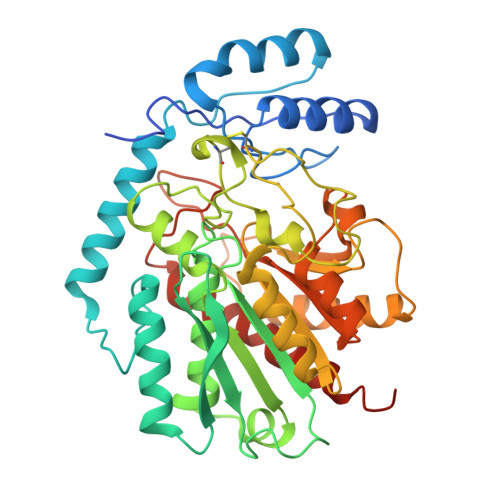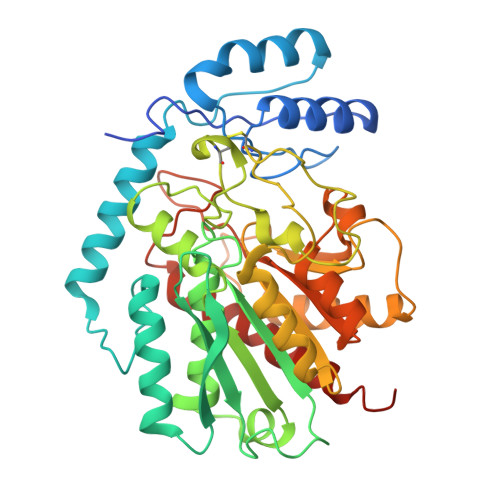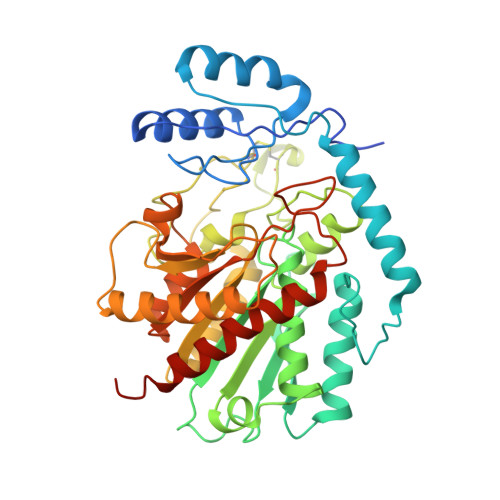Crystal structure of a novel mid-gut procarboxypeptidase from the cotton pest Helicoverpa armigera.
Estebanez-Perpina, E., Bayes, A., Vendrell, J., Jongsma, M.A., Bown, D.P., Gatehouse, J.A., Huber, R., Bode, W., Aviles, F.X., Reverter, D.(2001) J Mol Biology 313: 629-638
- PubMed: 11676544
- DOI: https://doi.org/10.1006/jmbi.2001.5076
- Primary Citation of Related Structures:
1JQG - PubMed Abstract:
The cotton bollworm Helicoverpa armigera (Hubner) (Lepidoptera: Noctuidae) is one of the most serious insect pests in Australia, India and China. The larva causes substantial economical losses to legume, fibre, cereal oilseed and vegetable crops. This pest has proven to be difficult to control by conventional means, mainly due to the development of pesticide resistance. We present here the 2.5 A crystal structure from the novel procarboxypeptidase (PCPAHa) found in the gut extracts from H. armigera larvae, the first one reported for an insect. This metalloprotease is synthesized as a zymogen of 46.6 kDa which, upon in vitro activation with Lys-C endoproteinase, yields a pro-segment of 91 residues and an active carboxypeptidase moiety of 318 residues. Both regions show a three-dimensional structure quite similar to the corresponding structures in mammalian digestive carboxypeptidases, the most relevant structural differences being located in the loops between conserved secondary structure elements, including the primary activation site. This activation site contains the motif (Ala)(5)Lys at the C terminus of the helix connecting the pro- and the carboxypeptidase domains. A remarkable feature of PCPAHa is the occurrence of the same (Ala)(6)Lys near the C terminus of the active enzyme. The presence of Ser255 in PCPAHa instead of Ile and Asp found in the pancreatic A and B forms, respectively, enlarges the S1' specificity pocket and influences the substrate preferences of the enzyme. The C-terminal tail of the leech carboxypeptidase inhibitor has been modelled into the PCPAHa active site to explore the substrate preferences and the enzymatic mechanism of this enzyme.
Organizational Affiliation:
Abteilung für Strukturforschung, Max-Planck-Institut für Biochemie, Am Klopferspitz 18a, D-82152 Planegg-Martinsried, Germany.



















